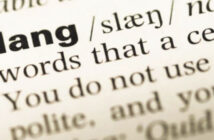Back home in Hogan Holler, it wasn’t unusual to walk into someone’s home and see a picture of Jesus on one wall and a picture of President Franklin D. Roosevelt on another. That is, until the 1960s when things began changing politically.
Perhaps no New Deal program endeared FDR to rural folks more than the REA, the Rural Electrification Act, proposed by the President in 1935, and enacted into law by Congress in 1936. Prior to 1936, most people in cities and towns had access to electricity, but running power lines to widely scattered rural homes was cost prohibitive. (Similarly, people living today in many rural areas ha
ve difficulty receiving broadband.)
On a recent visit to Warm Springs, Georgia, home of FDR’s Little White House, I enjoyed a conversation with a long-time volunteer at the FDR Memorial Museum who pointed out that Roosevelt started coming to Warm Springs in 1924 for treatment of his infantile paralysis (polio). She said that during his visits he often toured the local area in a specially designed automobile that allowed him to drive despite his paralysis.
Roosevelt often stopped to make the acquaintance of local residents. That’s how he became aware of their need for electricity . . . and thus, had the idea for the REA, which provided federal funding for the formation of cooperatives, the purpose of which was to bring electricity to the rural countryside. (Many of these co-ops are still in existence today.)
It was well into the 1940s before electricity found its way into our Holler. So I have faint memories of the Day the Lights Came On!
Households choosing to receive electricity had one overhead outlet installed in each room, with a pull cord to turn the light on and off. Dad tied one end of a string to the pull cord and the other end to a bedpost so he and Mom could turn the light on and off from the bed.
With the coming of electricity, hardware stores had difficulty keeping light socket adapters and drop cords in stock. An adapter provided more than one outlet for this new “magic.” And with a drop cord, power could be supplied to various appliances.
For many people, their first electric appliance was a refrigerator. No more weekly visits from the iceman heaving large blocks of ice into the icebox! (Frigidaire was such a popular brand name in those days many people called any refrigerator a Frigidaire no matter the brand.)
Some folks chose to make their first electric appliance a cookstove. No more cutting and carrying in wood every day! (My grandmother kept a wood stove even after getting an electric range, saying that cornbread just didn’t taste right baked in an electric oven.)
In the Hogan House, our first electric appliance purchase was not a refrigerator or a cookstove, but rather a radio. I recall Dad, who had been a Golden Gloves boxer and loved listening to boxing on the radio, saying, “No more worrying about the radio battery going dead during a Joe Louis fight!” Mom said the same about her radio soap operas.
In time, electricity availability became more refined with wall outlets and wall switches. I didn’t have to worry about tripping over a drop cord and perhaps silencing the radio while Dad was listening to boxing. That would have created a real fight! And a six-year-old was no match for a Golden Gloves boxer.
Not only did the coming of electricity elevate Roosevelt to almost God-like status among many rural residents, it also helped maintain the South as a solid block of votes for the Democratic Party for decades. It was known politically as the “Solid South.”
In fact, like many Southerners, most of my kin here in the Holler were Drop-Cord Democrats . . . until Reagan came along.
After 57 years in the radio industry, Dave Hogan is enjoying his retirement in North Carolina. He’d love for you to say ‘howdy’ to him via email: davealtonhogan@gmail.com.




